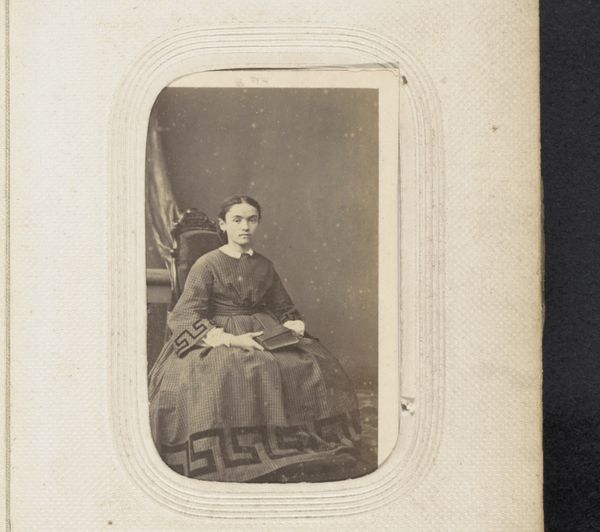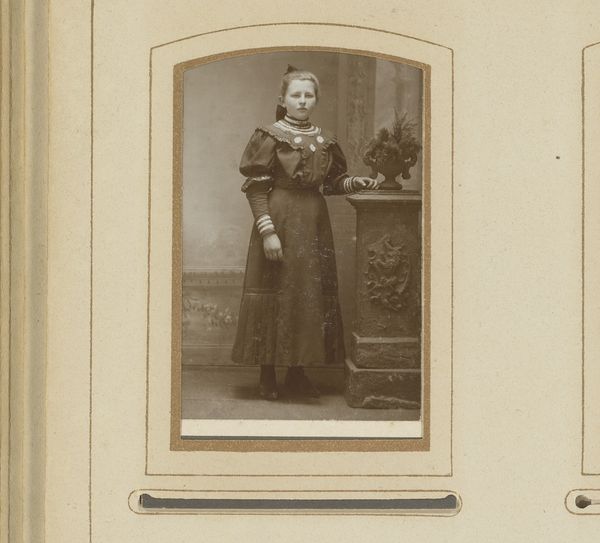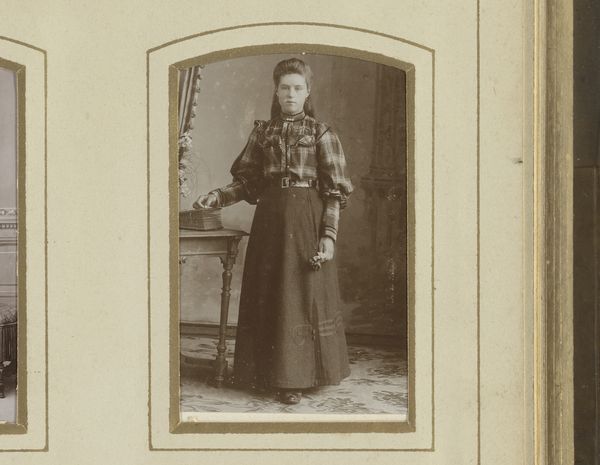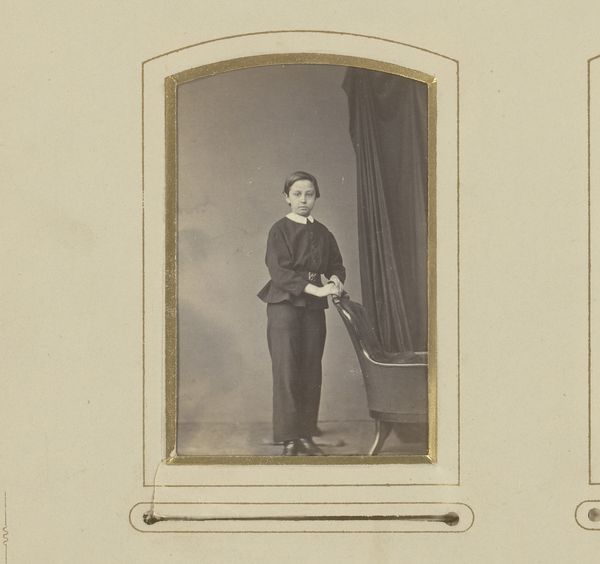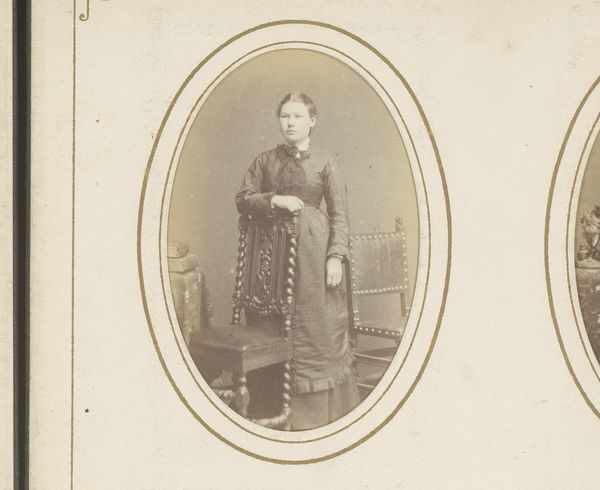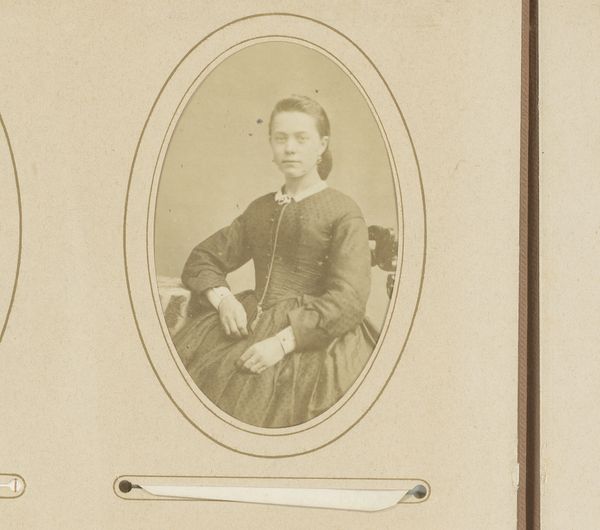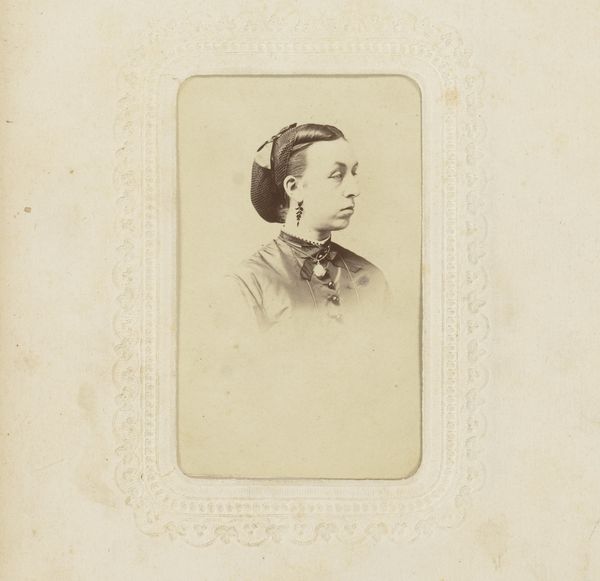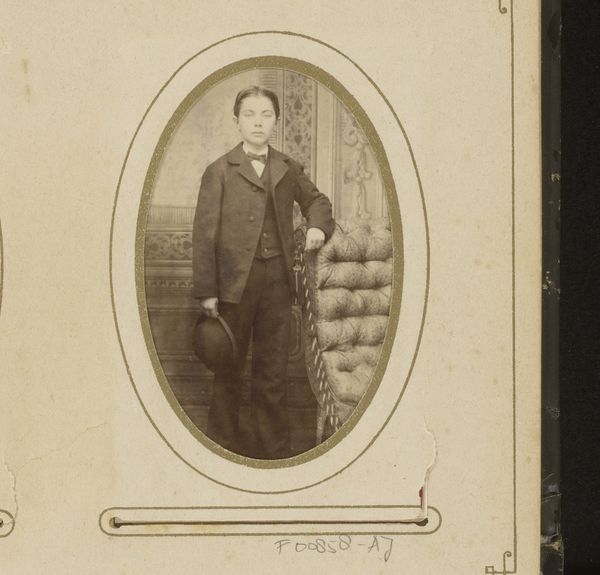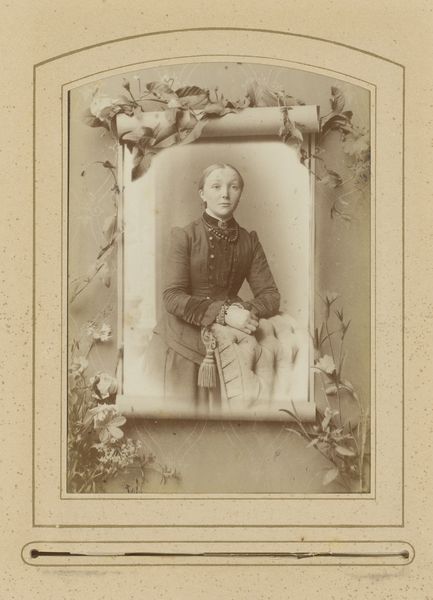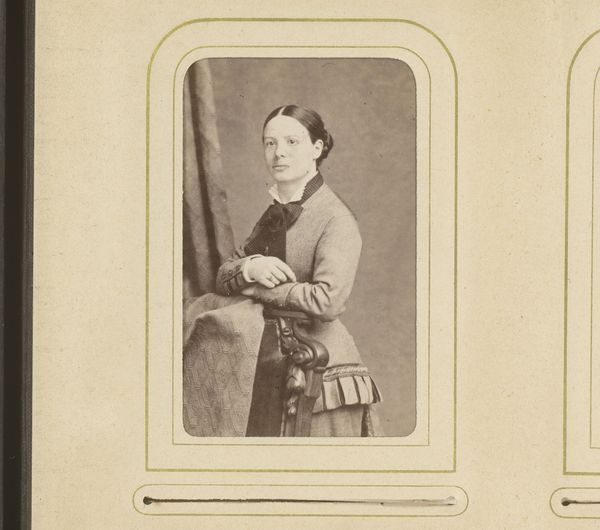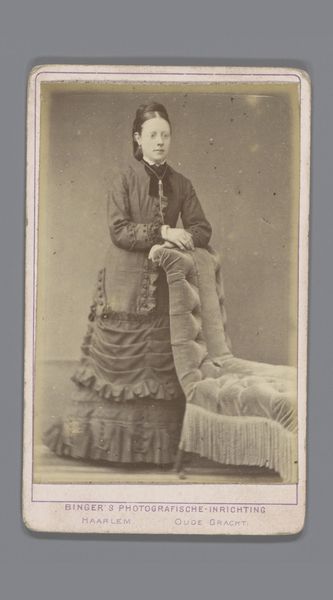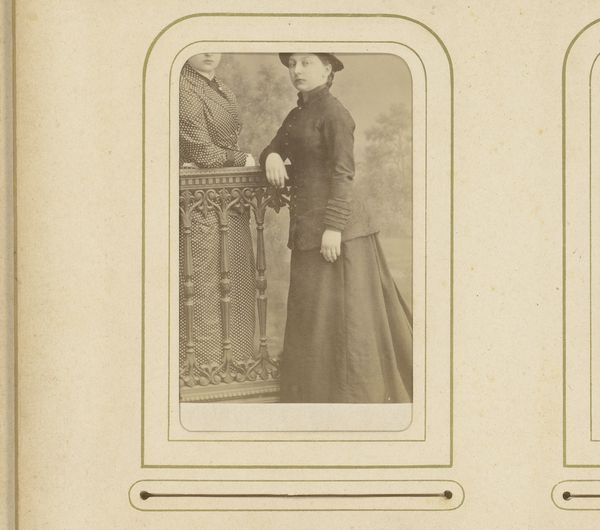
photography, gelatin-silver-print
#
portrait
#
photography
#
historical photography
#
gelatin-silver-print
#
genre-painting
#
academic-art
Dimensions: height 85 mm, width 52 mm
Copyright: Rijks Museum: Open Domain
Curator: Let’s discuss this intriguing piece, "Portret van een meisje, staand bij een stoel," which translates to “Portrait of a Girl, Standing by a Chair.” It’s an albumen silver print that probably dates sometime between 1860 and 1900. What strikes you immediately about it? Editor: The stillness. It's so quiet. This image feels frozen, not just in time, but in emotion. Her posture, her gaze, even the meticulously arranged props – it's all very controlled and reserved. I can't help but wonder what's going on behind those eyes. Curator: It’s precisely that sense of constructed formality that fascinates me. Portrait photography during this era served a specific social function. Think about the rise of the middle class and their desire to emulate aristocratic traditions. Photography democratized portraiture, making it accessible to more people as a tool for constructing identity and status. Editor: Absolutely. But looking at it through a contemporary lens, I can't ignore the layers of power dynamics at play. Who dictated this pose? What agency did this young girl truly have in representing herself? And why does she look so uncomfortable? Is it the clothing or the idea of having her portrait taken? The gaze says a lot without actually speaking. It raises a conversation around performance, and performativity, during this period. Curator: It’s a good reminder to unpack these historical representations. Her dress, the chair, the backdrop, even the slight blurring indicating the long exposure time-- they’re all intentional visual cues contributing to a carefully crafted image that served specific purposes within the social milieu of the time. Editor: Agreed, it really makes you think about the intersectional aspect here - the young woman, gender and identity as well as socioeconomics that shaped photographic portraits as social markers and gendered presentation. It’s more than just a pretty picture, isn’t it? Curator: Exactly. It is an artefact, frozen in time that embodies social ambitions and constructs a specific version of reality and tells more than the obvious, Editor: Thanks, seeing art as active participant with context gives these amazing photograph a deeper, often uncomfortable conversation.
Comments
No comments
Be the first to comment and join the conversation on the ultimate creative platform.
